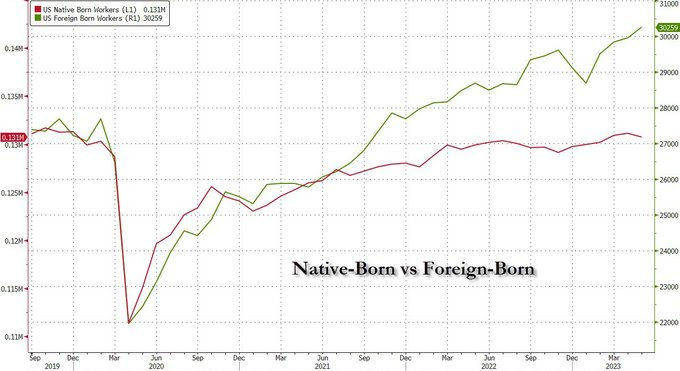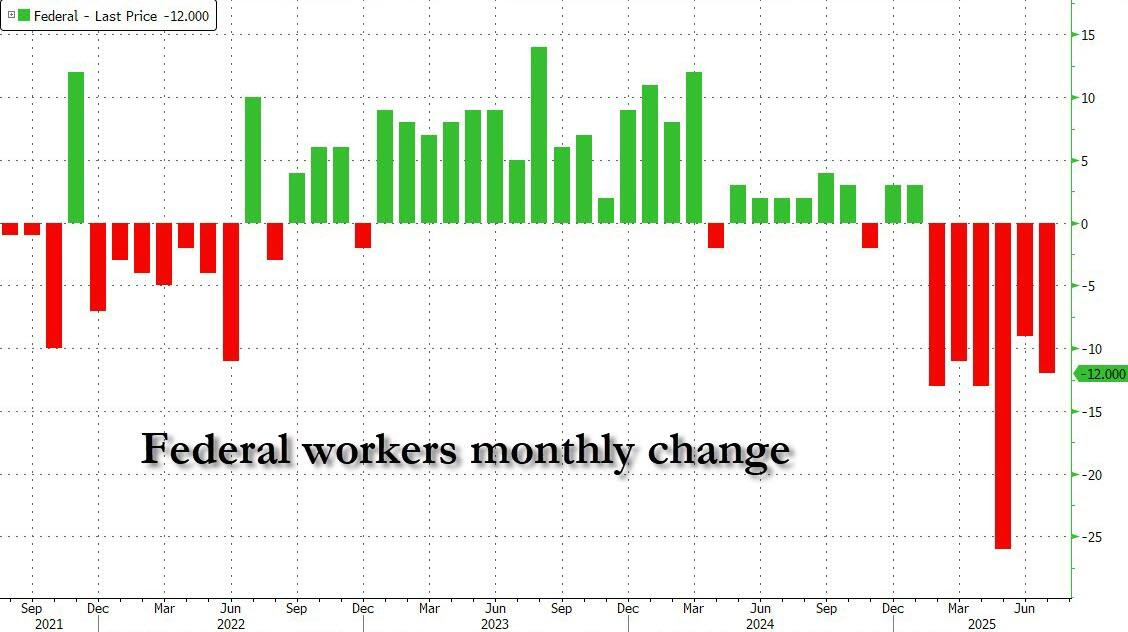July jobs report shows sharp slowdown, with payroll gains collapsing and native-born employment rising amid declining immigrant labor.
Sectors & Industries
Table of Contents
Friday’s July jobs report wasn’t just weak—it marked a structural break. Payrolls rose by only 73,000, far below expectations and revised May and June figures wiped out 258,000 prior jobs. The three-month average now sits at just +35,000—the lowest streak since COVID—and nowhere near the 100–150K monthly gains historically needed to keep unemployment flat.
The details were worse under the hood. Full-time jobs fell by 440,000, part-time jobs surged by 237,000, and the household survey showed a 260,000 employment loss. Labor force participation declined to 62.2%, and minority unemployment rates rose to the highest since 2021. Despite these signs of softening demand, wages rose 3.9% YoY, lifted in part by the replacement of low-wage workers with higher-paid domestic hires.
What’s behind the shift? Data now shows that foreign-born employment declined for the fourth month in a row—down 467,000 in July alone—while native-born employment rose by 383,000. Since Trump took office, foreign-born employment has declined in five of the past six months, while native-born workers have gained ground nearly every month. This appears to be the result of a targeted policy shift: a quiet but sweeping removal of undocumented workers from payrolls.

The result is a shrinking labor supply—especially in lower-wage sectors—paired with upward pressure on wages. Fewer workers, higher average pay, and more jobs concentrated in sectors like healthcare and social assistance. Federal government employment, meanwhile, declined for a sixth straight month, continuing its post-inauguration downsizing trend.

Markets quickly priced in a Fed response. Treasury yields fell 10–12bps, and odds for a September rate cut surged. Analysts flagged the steep revisions as the key catalyst, noting that Powell’s midweek confidence in the labor market now appears badly outdated. Trump didn’t wait to weigh in—he fired the BLS Commissioner within hours of the report and blamed the numbers on internal sabotage designed to weaken his position ahead of the election.
Utilities outperformed sharply on the news, as falling yields boosted the relative appeal of their high dividend payouts and defensive cash flows. With investors rotating into rate-sensitive sectors, the group benefited from both falling borrowing costs and rising demand for stability. Gold also jumped, gaining on the drop in real yields and renewed expectations for monetary easing. The precious metal continues to serve as a hedge against policy volatility and economic uncertainty, especially with political risk heating up into the fall.
The labor market is changing—and quickly. The purge of undocumented workers is reducing labor supply and lifting wage averages - a key promise by the Trump administration. But it's also creating frictions across sectors reliant on low-cost labor. What’s emerging is a labor market tighter, pricier, and more domestically sourced—and one that could force the Fed’s hand sooner than expected to try and boost jobs growth.
Join LevelFields now to be the first to know about events that affect stock prices and uncover unique investment opportunities. Choose from events, view price reactions, and set event alerts with our AI-powered platform. Don't miss out on daily opportunities from 6,300 companies monitored 24/7. Act on facts, not opinions, and let LevelFields help you become a better trader.

AI scans for events proven to impact stock prices, so you don't have to.
LEARN MORE